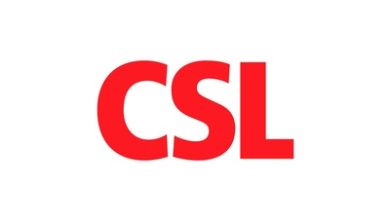- Study Definitively Proves Its Incineration Facilities Can Safely Destroy PFAS with Emissions Two to Eight Times Below Any State or Federal Limitations
- Study Involved Onsite Participation from the U.S. Environmental Protection Agency and Department of Defense at Company’s RCRA-Permitted Incinerator
NORWELL, Mass.–(BUSINESS WIRE)–Clean Harbors, Inc. (NYSE: CLH) (“Clean Harbors” or the “Company”), the leading provider of environmental and industrial services throughout North America, today announced the successful results of its latest PFAS study, which affirms that its commercial high-temperature, RCRA-permitted incineration facilities can reliably and safely destroy multiple forms of PFAS (per- and poly-fluorinated alkyl substances), the “forever chemicals” that pose significant human health risks. For the full results from the study click here.
The testing protocols were an extension of the initial tests the Company conducted in 2021 and 2022 using U.S. Environmental Protection Agency (EPA) standards. The latest study was specifically designed to demonstrate that Clean Harbors’ high-temperature combustion process – ranging from 2,000-2,200 degrees Fahrenheit – could achieve destruction of PFAS compounds while testing for the EPA’s stringent new OTM-50 and 0010 (pre-cursor to OTM-55) emission standards, which were not part of the earlier testing. No other company or destruction technology has met both EPA standards.
“These study results further validate that we can safely and thoroughly destroy a wide variety of PFAS compounds in our high-temperature RCRA-permitted hazardous waste incinerators,” said Eric Gerstenberg, Co-Chief Executive Officer. “We have always been confident in the capabilities of our facilities as it relates to PFAS compounds. There has been misinformation around incineration and whether it is safe to destroy PFAS. We excelled using both OTM-50 and 0010 – the EPA’s strictest and newest testing standards for PFAS. We are the only company to have achieved that designation. Most importantly, we demonstrated with certainty that we can effectively eliminate the threat from forever chemicals in its multiple forms and at commercial scale with consistent outcomes.”
The testing for the latest PFAS study was conducted in November 2024 at a Clean Harbors incineration facility, in conjunction with officials from the EPA and the Department of Defense (DoD). EPA Administrator Lee Zeldin recently visited Clean Harbors Deer Park incineration facility and saw firsthand how advanced treatment technologies are being deployed to address hazardous materials, such as PFAS. Following the visit, Administrator Zeldin remarked that it is “impressive to see new American technologies being implemented to protect the environment.”
Mike Battles, Co-Chief Executive Officer, said, “In recent years, scientific evidence has repeatedly proven the adverse health effects of many of these PFAS chemicals. The EPA and other federal and state regulatory authorities have begun establishing frameworks to protect human health from the impacts of these compounds. The first major step at the federal level was the creation in 2024 of a drinking water standard. Further steps are needed to establish rules for soil remediation and acceptable methods for PFAS destruction. We partnered directly with the EPA for our recent testing to ensure that we not only met their latest standards but gathered the most comprehensive data to help regulators develop effective new regulations for PFAS and protect the country from its health impacts. The U.S. Department of Defense also was involved, given their commitment to protecting service members and addressing potential PFAS contamination at military installations.”
Under the testing conditions, sampling and analysis was conducted for the key PFAS compounds and any potential residual volatile and semi-volatile elements. The test data reviewed the incinerator process waste feed streams, solid and liquid process residue streams, and incinerator stack gases. AFFF concentrate, PFOA, PFOS, PFBA, PFDA, PFHxA, PFHxS, HFPO-DA and other PFAS chemicals were introduced to the incineration facilities during its normal operation. As with the previous tests conducted by Clean Harbors, the latest data showed that these PFAS compounds were not only effectively destroyed, but also that stack emissions resulted in ambient concentrations two to eight orders of magnitude safer than any state or federal ambient air limit or guideline.
The comprehensive test results were shared for review and validation of the study’s conclusions with two highly regarded third parties – Melvin E. Keener, Ph.D., Executive Director for the Coalition for Responsible Waste Incineration (CRWI) and Dr. Jens Blotevogel, a Principal Research Scientist at Commonwealth Scientific and Industrial Research Organization (CISRO). Both researchers have spent decades evaluating the impacts of environmental organic contaminants.
“We know that many customers want safe, assured destruction of PFAS at scale to eliminate any further liabilities as these chemicals never degrade and often migrate,” said Gerstenberg. “There are many locations that have soil, water or both contaminated by PFAS, as well as stockpiles of compounds such as AFFF that customers need solutions to address. In addition, over the decades, PFAS chemicals have leached into groundwater and contaminated drinking supplies. Given that customers are facing PFAS in multiple forms, we introduced our ‘Total PFAS Solution’ in 2024 consisting of eight core elements and providing customers with a range of services to meet all their needs, from analysis to water filtration to remediation to disposal. Today, Clean Harbors remains the only company that can offer an end-to-end, single-source answer for any PFAS need, and at a commercially scalable level.”
Battles concluded, “Based on the results of this latest rigorous study, we continue to view our end-to-end solution and thermal destruction at our RCRA-permitted facilities as the safest and most viable option for addressing and eliminating PFAS, which in total represents a massive market opportunity in the years ahead. The study data supports the confidence we have in our technology and state-of-the-art air pollution and emission controls; the study results should dispel any lingering doubts about PFAS incineration.”
The Company’s Total PFAS Solution offering is detailed on its PFAS website – www.cleanharbors.com/PFAS.
About Clean Harbors
Clean Harbors (NYSE: CLH) is North America’s leading provider of environmental and industrial services. The Company serves a diverse customer base, including a majority of Fortune 500 companies. Its customer base spans a number of industries, including chemical, manufacturing and refining, as well as numerous government agencies. These customers rely on Clean Harbors to deliver a broad range of services such as end-to-end hazardous waste management, emergency spill response, industrial cleaning and maintenance, and recycling services. Through its Safety-Kleen subsidiary, Clean Harbors also is a leading provider of parts washers and environmental services to commercial, industrial and automotive customers, as well as North America’s largest re-refiner and recycler of used oil. Founded in 1980 and based in Massachusetts, Clean Harbors operates in the United States, Canada, Mexico, Puerto Rico and India. For more information, visit www.cleanharbors.com.
Safe Harbor Statement
Any statements contained herein that are not historical facts are forward-looking statements within the meaning of the Private Securities Litigation Reform Act of 1995. These forward-looking statements are generally identifiable by use of the words “believes,” “expects,” “intends,” “anticipates,” “plans to,” “seeks,” “will,” “should,” “estimates,” “projects,” “may,” “likely,” “potential,” “outlook” or similar expressions. Such statements may include, but are not limited to, statements about the Company’s PFAS-related capabilities, customer demand for its PFAS solution, future regulatory changes related to PFAS and other statements that are not historical facts. Such statements are based upon the beliefs and expectations of Clean Harbors’ management as of the date of this press release only and are subject to certain risks and uncertainties that could cause actual results to differ materially, including, without limitation: operational and safety risks; risks relating to the failure of new or existing technologies; cybersecurity risks; the occurrence of natural disasters or other catastrophic events, as well as their residual macroeconomic effects; risks associated with retaining and hiring key personnel; environmental liability and product liability risks relating to hazardous waste management and other components of the Company’s business; negative economic, industry or other developments, including market volatility or economic downturns; risks associated with management’s assumptions relating to expansion of the Company’s landfills; reductions in the demand for emergency response services at industrial facilities or on roadways, railways or waterways, and other remedial projects and regulatory developments; reductions in the demand for oil products and automotive services and volatility in oil prices in the markets the Company serves; changes in statutory and regulatory requirements and risks relating to extensive environmental laws and regulations; risks associated with existing and potential litigation; risks associated with the Company’s identification and execution of strategic acquisitions and divestitures and their related liabilities; risks relating to the availability and sufficiency of the Company’s insurance coverage, self-insurance, surety bonds, letters of credit and other forms of financial assurance; the impact of new tax legislation or changes in tax regulations and interpretations; the imposition of trade sanctions or tariffs; fluctuations in interest rates and foreign currency exchange rates; risks relating to the Company’s indebtedness and covenants in its debt agreements; risks associated with certain anti-takeover provisions under the Massachusetts Business Corporation Act and the Company’s By-Laws, and those items identified as “Risk Factors” in Clean Harbors’ most recently filed reports on Form 10-K and Form 10-Q. Forward-looking statements are neither historical facts nor assurances of future performance. Therefore, readers are cautioned not to place undue reliance on these forward-looking statements. Clean Harbors undertakes no obligation to revise or publicly release the results of any revision to these forward-looking statements other than through its filings with the Securities and Exchange Commission, which may be viewed in the “Investors” section of Clean Harbors’ website at www.cleanharbors.com.
Contacts
Eric J. Dugas
EVP and Chief Financial Officer
Clean Harbors, Inc.
781.792.5100
[email protected]
Jim Buckley
SVP Investor Relations
Clean Harbors, Inc.
781.792.5100
[email protected]
Customer Contact:
Paul Bratti
Senior Vice President, Remediation
Clean Harbors, Inc.
781.792.5000
[email protected]





